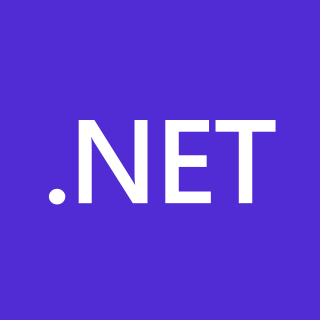
JavaScript, often abbreviated as JS, is a programming language and core technology of the Web, alongside HTML and CSS. 99% of websites use JavaScript on the client side for webpage behavior.
VBScript is a deprecated programming language for scripting on Microsoft Windows using Component Object Model (COM) based on classic Visual Basic and Active Scripting.
In computing, cross-platform software is computer software that is designed to work in several computing platforms. Some cross-platform software requires a separate build for each platform, but some can be directly run on any platform without special preparation, being written in an interpreted language or compiled to portable bytecode for which the interpreters or run-time packages are common or standard components of all supported platforms.
In object-oriented (OO) and functional programming, an immutable object is an object whose state cannot be modified after it is created. This is in contrast to a mutable object, which can be modified after it is created. In some cases, an object is considered immutable even if some internally used attributes change, but the object's state appears unchanging from an external point of view. For example, an object that uses memoization to cache the results of expensive computations could still be considered an immutable object.
JScript is Microsoft's legacy dialect of the ECMAScript standard that is used in Microsoft's Internet Explorer web browser.
This article compares two programming languages: C# with Java. While the focus of this article is mainly the languages and their features, such a comparison will necessarily also consider some features of platforms and libraries. For a more detailed comparison of the platforms, see Comparison of the Java and .NET platforms.
Managed Extensions for C++ or Managed C++ is a deprecated set of language extensions for C++, including grammatical and syntactic extensions, keywords and attributes, to bring the C++ syntax and language to the .NET Framework. These extensions were created by Microsoft to allow C++ code to be targeted to the Common Language Runtime (CLR) in the form of managed code, as well as continue to interoperate with native code.

C# is a general-purpose high-level programming language supporting multiple paradigms. C# encompasses static typing, strong typing, lexically scoped, imperative, declarative, functional, generic, object-oriented (class-based), and component-oriented programming disciplines.
Platform Invocation Services, commonly referred to as P/Invoke, is a feature of Common Language Infrastructure implementations, like Microsoft's Common Language Runtime, that enables managed code to call native code.

Oxygene is a programming language developed by RemObjects Software for Microsoft's Common Language Infrastructure, the Java Platform and Cocoa. Oxygene is based on Delphi's Object Pascal, but also has influences from C#, Eiffel, Java, F# and other languages.
C# and Visual Basic .NET are the two primary languages used to program on the .NET Framework.
In computer programming, an anonymous function is a function definition that is not bound to an identifier. Anonymous functions are often arguments being passed to higher-order functions or used for constructing the result of a higher-order function that needs to return a function. If the function is only used once, or a limited number of times, an anonymous function may be syntactically lighter than using a named function. Anonymous functions are ubiquitous in functional programming languages and other languages with first-class functions, where they fulfil the same role for the function type as literals do for other data types.
TypeScript is a free and open-source high-level programming language developed by Microsoft that adds static typing with optional type annotations to JavaScript. It is designed for the development of large applications and transpiles to JavaScript. Because TypeScript is a superset of JavaScript, all JavaScript programs are syntactically valid TypeScript, but they can fail to type-check for safety reasons.
The Dynamic Language Runtime (DLR) from Microsoft runs on top of the Common Language Runtime (CLR) and provides computer language services for dynamic languages. These services include:
This article describes the syntax of the C# programming language. The features described are compatible with .NET Framework and Mono.
Language Integrated Query is a Microsoft .NET Framework component that adds native data querying capabilities to .NET languages, originally released as a major part of .NET Framework 3.5 in 2007.
The programming language C# version 3.0 was released on 19 November 2007 as part of .NET Framework 3.5. It includes new features inspired by functional programming languages such as Haskell and ML, and is driven largely by the introduction of the Language Integrated Query (LINQ) pattern to the Common Language Runtime. It is not currently standardized by any standards organisation.

The .NET Framework is a proprietary software framework developed by Microsoft that runs primarily on Microsoft Windows. It was the predominant implementation of the Common Language Infrastructure (CLI) until being superseded by the cross-platform .NET project. It includes a large class library called Framework Class Library (FCL) and provides language interoperability across several programming languages. Programs written for .NET Framework execute in a software environment named the Common Language Runtime (CLR). The CLR is an application virtual machine that provides services such as security, memory management, and exception handling. As such, computer code written using .NET Framework is called "managed code". FCL and CLR together constitute the .NET Framework.
Dart is a programming language designed by Lars Bak and Kasper Lund and developed by Google. It can be used to develop web and mobile apps as well as server and desktop applications.



